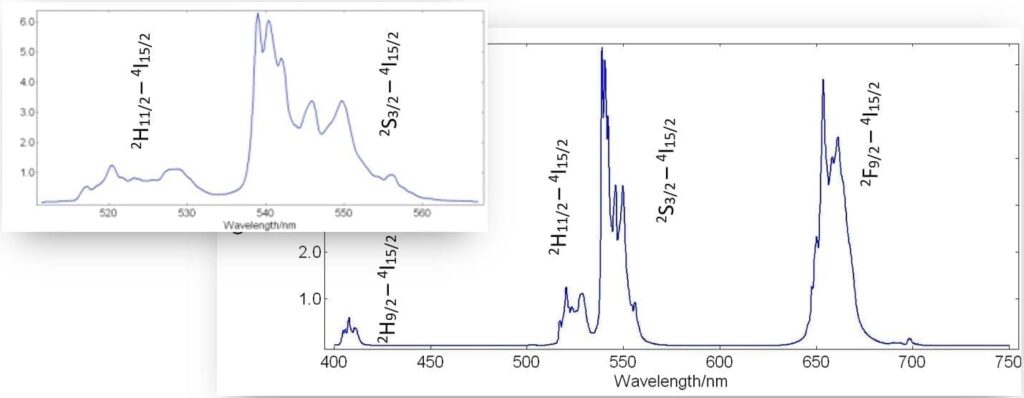Lanthanide-Based Fluorescence Up-Conversion Material
Lanthanide-based Fluorescence Up-Conversion materials present unique optical properties for applications ranging from biological imaging to data storage to solid-state lighting. They possess the ability to generate ultraviolet to near-infrared (UV-NIR) emissions from lower energy excitation through non-linear multi-photon events. Inorganic crystals, such as Y2O3, NaYF4, and LaF3, can be doped with single or multiple lanthanide ions, which under infrared laser excitation produce UV-NIR up-converted emission.
Typically, up-converted UV-NIR emissions are generated from 980 nm laser excitation of Yb ions, where subsequent f-block energy transfers and electron-phonon coupling within the crystal to their lanthanides, such as Er, Ho, or Tm, to produce higher energy, emissive f-block states. Since the emitted spectrum and associated lifetimes are a function of the crystal composition, the lanthanide ions present, the laser excitation density, and the phase (solution/solid/ film), a highly sensitive, precise instrument is needed to appropriately record accurate and reproducible data.
The FS5 Spectrofluorometer, equipped with 980 nm laser and a PM-1 pulse modulator box, provides a compact, straightforward, precise and reliable tool that is easy to operate for the acquisition of spectral and lifetime properties of lanthanide-based up-conversion materials.
Figure 1: Fluorescence Up-Conversion emission spectrum of NaY0.77Yb0.20Er0.03F4 phosphor
Download the Full Fluorescence Up-Conversion Application Note
Lanthanide-Based Fluorescence Up-Conversion Materials
FS5 Spectrofluorometer
For further information on the FS5 Spectrofluorometer, why not contact one of our sales team today at sales@edinst.com.
Sign-Up for our Application and Technical Notes
If you have enjoyed reading our Application Note, why not sign-up to our infrequent newsletter via our red Sign-up button below.









